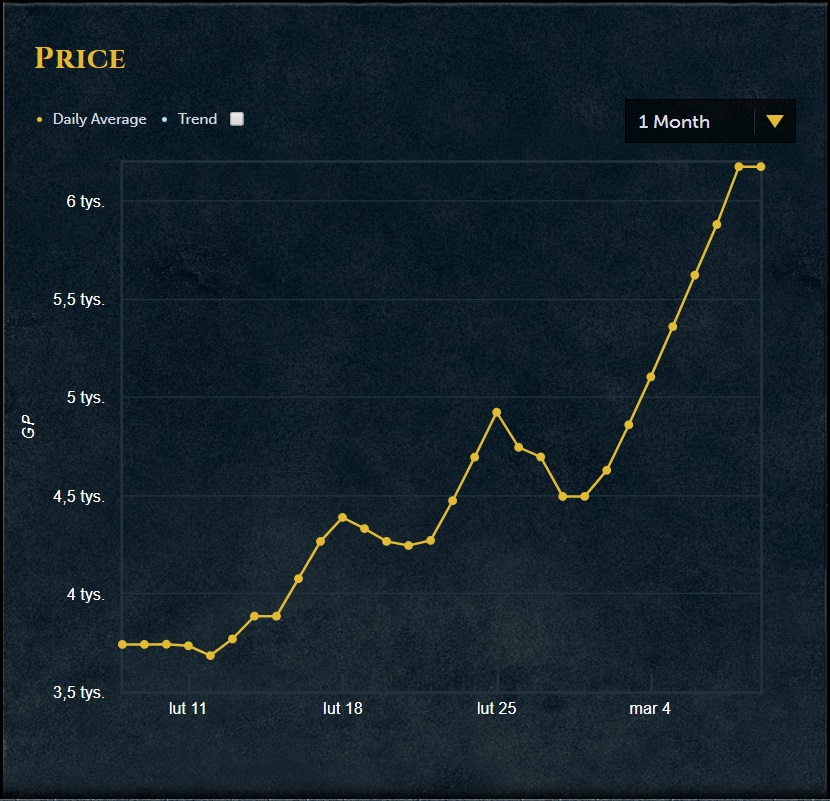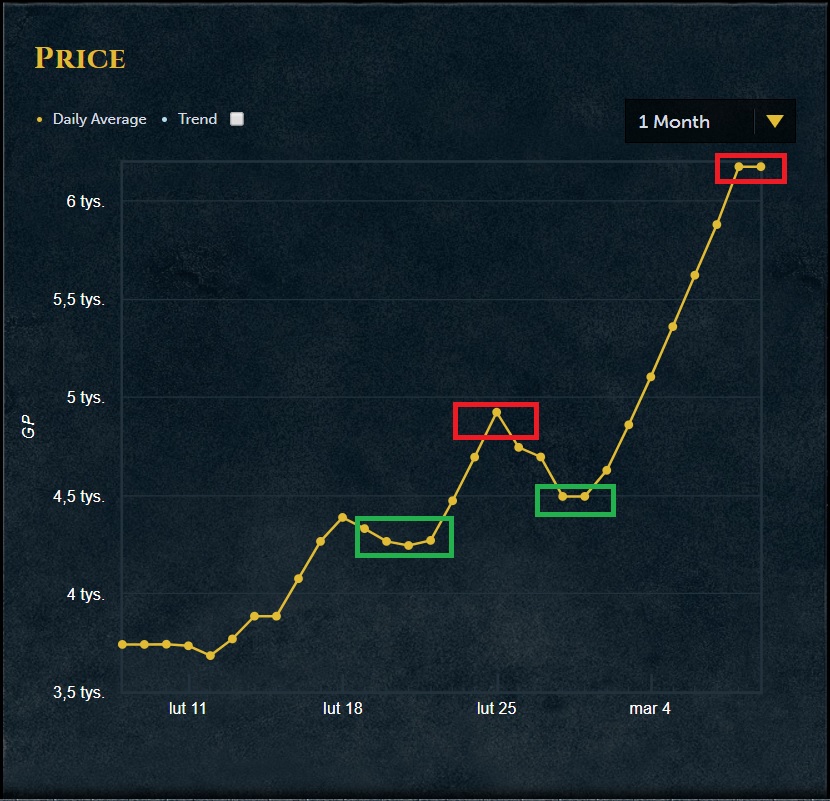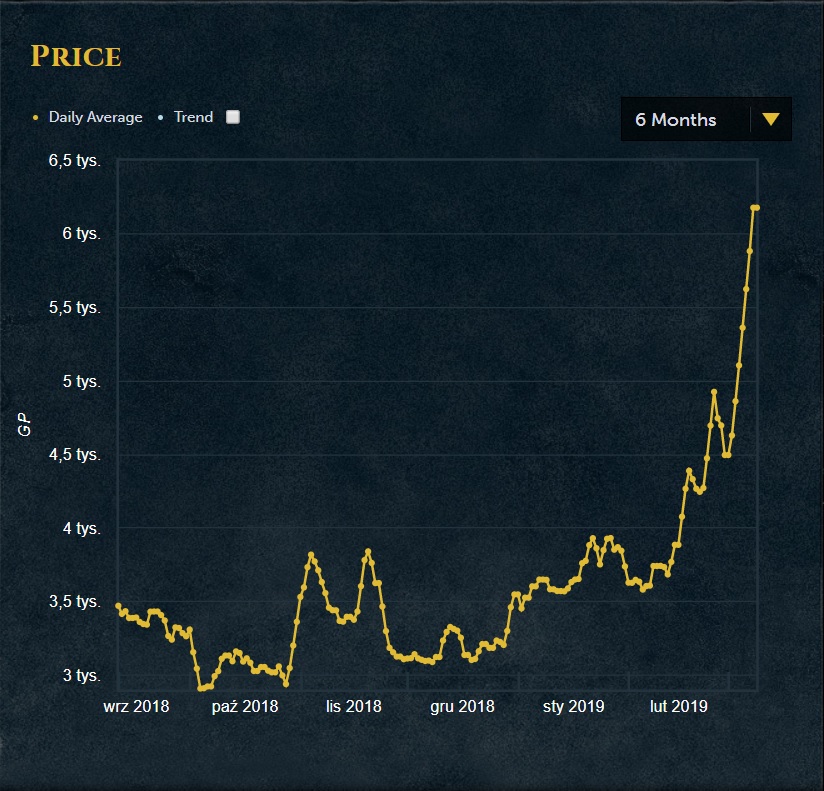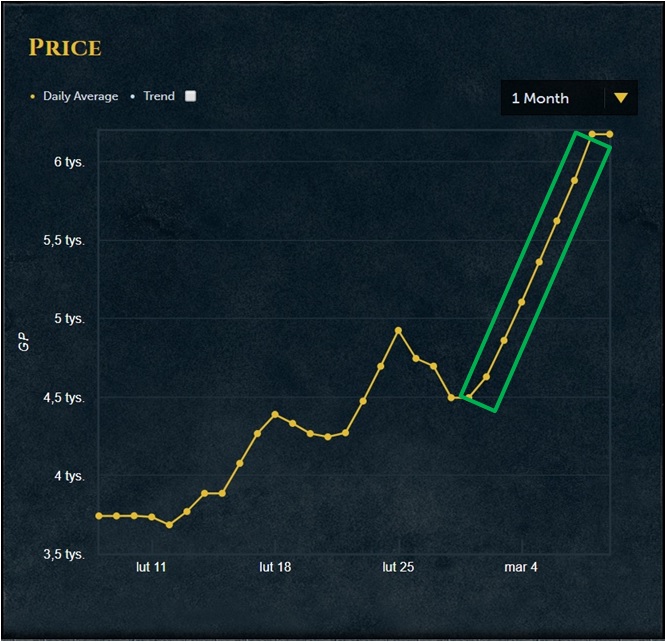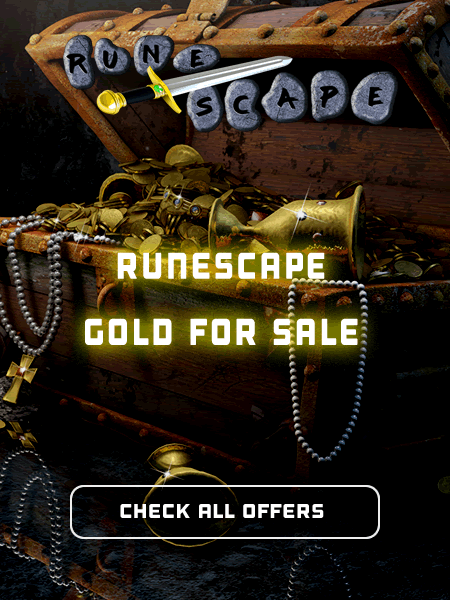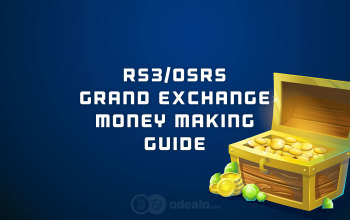
Runescape 3 and OSRS Grand Exchange Moneymaking Guide
In-depth guide about Runescape Gold-making on the Grand ExchangeThe Ultimate Runescape 3/OSRS Grand Exchange Moneymaking Guide
Introduction
This guide will go over two main ways of making Gold through the Grand Exchange, in OSRS and Runescape 3. The GE is almost exactly the same in this two RS versions, so we have decided to cover the topic together for both games and point out any important differences (like popular items, and available online statistic tools). Before we go into details, let us start by covering some basic, general, and most importantly, useful information:
- The Grand Exchange is the in-game trading system which lets Players Sell and Buy almost all tradable items; F2P Players are limited to 3 active listings, while Premium Members can post up to 8 trade offers (this means that Free Players will have a much harder time using the GE to their advantage).
- It was released on 26th of November 2007 in the Runescape and on 26th of February 2015 in the OSRS, after Players have voted for it in the official pool.
- It is located North-West of the Varrock city in both versions of the Game.
- Transactions are conducted automatically and a chat notification is sent to a Player each time a transaction is completed, which means that the only thing that Players have to do is post up their Offers; there is no need for any Player to Player interaction when using the GE (this means that you can stay anonymous at all times which might be important when flipping or trying to manipulate prices...).
- There are 6 NPC Guides who show the current prices of various item types (named the same in both OSRS and RS3): Hofuthand (Armors and Weapons), Murky Matt (Runes; He can also Decant your charged items), Bob Barter (Herbs; He can also Decant your potions), Relobo Blinyo (Logs), Farid Morrisane (Ores), and Brugsen Bursen (Items price guide in OSRS, and Grand Exchange information in Runescape 3).
- Safeguard Trade restrictions are set on the Grand Exchange in order to limit price manipulation, real-world trading, and unfair Player interactions. Game developers believe in the player-driven in-game economy, so they have removed all item price restrictions, and the only forced limitation is currently the maximum quantity of an item which can be bought every 4 hours; each item/item type has its own limit; Jagex will only intervene at the last resort when price fixing and manipulating gets off the charts and becomes unhealthy for the in-game economy. Players work their way around those limitations by grouping up on dedicated Friends chats and buying out certain agreed upon items; please note that actions like that are mostly set up by Experienced GE Flippers, and common players are used as pawns for increasing prices.
- The in-game economy follows the general Laws of Supply and Demand. This means that:
1. If the Demand for an item is lower than its Supply, the Price of the said item will decrease.
2. If the Demand for an item is higher than its Supply, the Price of the said item will increase.
3. If the Demand for an item is the same as its Supply, the Price of the said item will stabilize.
Understanding these basic rules will help you flip the market more effectively. The main conclusions that emerge from these rules are:
1. Avoid items that are traded extensively in high numbers, because those items match the third category, and profiting on them is almost impossible.
2. Avoid items that are easy to get and not that useful, because items like that generally match the first category.
3. Focus on useful items that require some hassle to get, because those items will most often match the second category.
Important note: please remember that the Supply-Demand relation is fluid and can change weekly, daily or even hourly! - We can distinguish two main ways of profiting out of the Grand Exchange (we will describe both of them in much more detail in further sections of this article):
1. Flipping - A short term investment based on the difference between item's Buy and Sell prices (the higher the difference, the higher the profit).
2. Investing - A long term investment based on the change of the GE trends (this strategy requires a lot of up to date market knowledge).
|
|
Gaining the Grand Exchange Knowledge
At their core, Flipping and Investing follow a very basic principle - buy low and sell high. Sounds simple, right? Well, it kind of is, and at the same time isn't, because there are a lot of factors that have to be taken into account. We will do our best to describe those factors, and show you the general strategies which will let you make a lot of money out of the Grand Exchange.
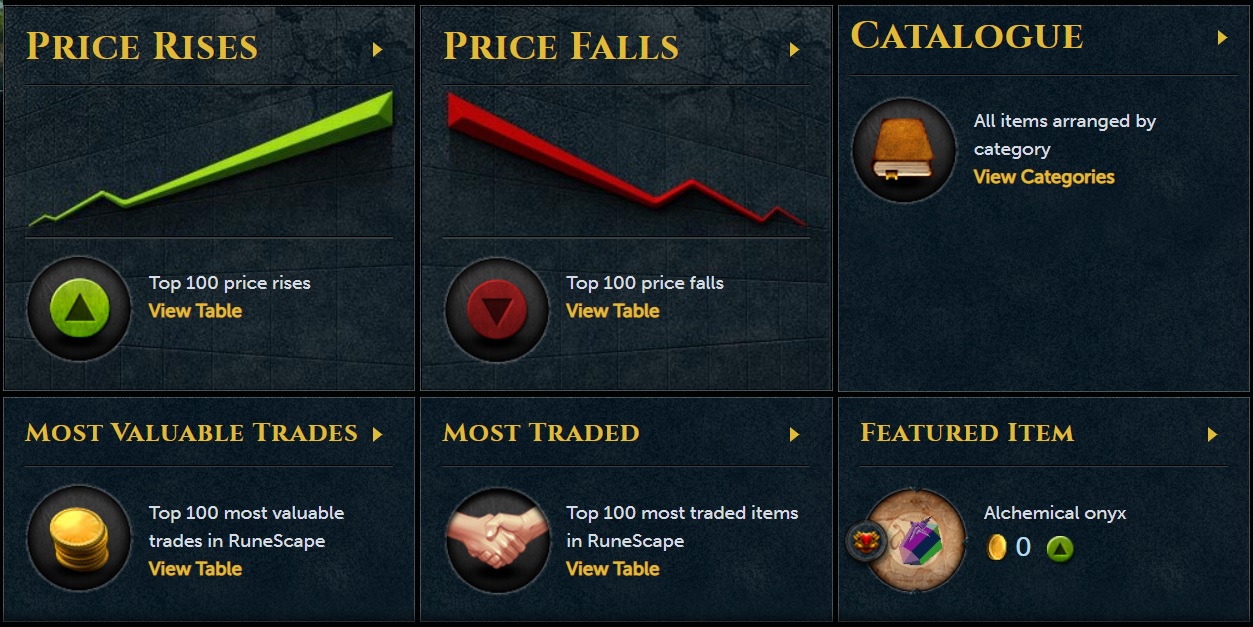
The Grand Exchange Market Watch is the official Jagex tool for viewing in-game Trade statistics.
|
Before we start profiting out of the Grand Exchange, we have to analyze Supply and Demand trends in order to identify the best items for Flipping and Investing. There are a few ways to do that. First of all, experienced Players will probably list these items from their memory easily, as they are using them extensively. If you do not have knowledge about the most profitable items, you can for example:
Graph 1. shows us how the graph of the potentially profitable item looks like. We can see a stable rise in the Item's price with just a few little drops. Now that we found a promising graph, we have to analyze it:
Green rectangles show us the best time to buy the analyzed Item (periods when stable price begins to rise again). Red rectangles show us when to sell the analyzed item (periods when price begins to fall). After the initial analysis, we should take a look at the long-term (3 and 6 months) graphs in order to get some wider perspective and the trend confirmation.
Graph 3. shows us that our item's price is the highest in 6 months, and starts to stabilize, which most likely means that it will start to drop. We should not buy the said item in this situation, and wait for the price to develop instead. The right time to buy this item will come with the price stabilization after the drop (look at the periods marked with green rectangles on the Graph 2. for a reference). Now that we know the basics of Graph reading, let us look at two more methods of gaining the important GE knowledge.
Armed with our new knowledge, we can proceed with our ultimate goal, which is, of course, making a lot of Gold via the Grand Exchange. As mentioned before, there are two main ways of doing it; we will now describe both of them in detail, so you can choose the one best suited for you, or just start using both for even higher potential gains. |
Grand Exchange Investing
|
Investing in RS3/OSRS Grand Exchange is very similar to the real world investing. In-game items are our shares, and our goal is to buy them at an occasional price, wait a certain amount of time, and then sell them at a profit. This might sound random at first (if it does, please look at the "Gaining the Grand Exchange Knowledge" section again), but it really isn't, as there are a lot of ways of predicting the upcoming price changes (the main three were described in the previous paragraph). When you identify worthwhile Items (those with their current price state similar to the state marked by a green rectangle on the Graph 2., ones that will become more useful after an update, or the ones that will be soon bought out by a trade friends chat members), the rest becomes very straight forward; you buy large quantities of the said Items, and proceed to monitor their prices on a daily basis - when you spot a price drop (red rectangle on the Graph 2.) you post your items at the new, higher price and sell them at a profit. The best items for Investing are generally:
|
Grand Exchange Flipping
|
There are two main flipping methods in OSRS and RS2, High Volume Flipping (for items with high trade limits, like materials, fruits, seeds, and potions), and the Low Volume Flipping (for items with low trade limits, like High-End Gear, etc.). The basic principle for both of those methods is the same; you want to buy items relatively cheaply, and sell them IMMEDIATELY (this is why Flipping can be described as a short term investment; you do not want to hold on to bought items for too long) at a profit. To do this, you will have to determine the price margin (margin is the difference between an item's minimum and maximum market prices) of an item. To determine the margin of a High Volume item, you should:
The difference between these two prices is our margin/profit per item (5000 - 4700 = 300). We should narrow them slightly to speed up the trading process; that way we ensure that our prices are currently the best on the Grand Exchange, which will secure dynamic sales (for example, we narrow our 5000 - 4700 to 4980 - 4720 ⇒ this way, we make 40 less gold per item, but we speed up buying and selling processes greatly. This process has to be repeated for each of our traded Items on a daily basis to ensure our profits; if the margin narrows too much, we should look for another Item to flip. After our margins are determined it is time to buy large quantities of the currently most profitable items and start reselling them at a profit. To determine the margin of a Low Volume item, you should:
After establishing the margin for a Low Volume Item, it is time to buy it and repost it at a higher price. The only question left is "How to determine which Items are currently the best for Flipping?" The answer to that is: The Best items to Flip are the items that you would Invest in, but there is an important timing difference (do you remember our Graph 2.?), we will show this on another example:
The period of a steady rise in an Item's price is the best time for Flipping it. Graph 4. shows the best time window for Flipping the Item described in the first Paragraph. Focusing on items which prices are steadily rising will ensure the best possible profits. Now, that you have all the necessary information, it is time for you to start your own Grand Exchange endeavor. |
|
|
|
END NOTE Remember that Flipping and Investing in the Grand Exchange is associated with risk. This risk can be lowered by following the instructions described in this Guide, but avoiding it completely is impossible. Always be mindful of the current in-game economic situation, keep your information up to date, and never rush your decisions! Please do note that this is an early version of our guide, and we will be happy to receive constructive criticism, that will help us improve it, so leave your suggestions in the comments section below. If we have missed a piece of information that is important for you, please let us know! |
Pictures used in this article are the intellectual property of Jagex


